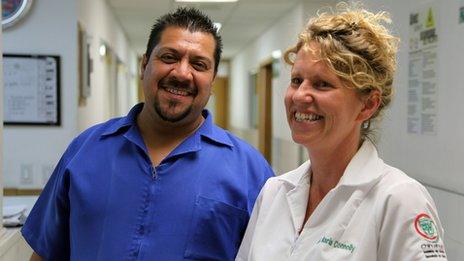Suicide in Ciudad Juarez: Where life has little value
- Published
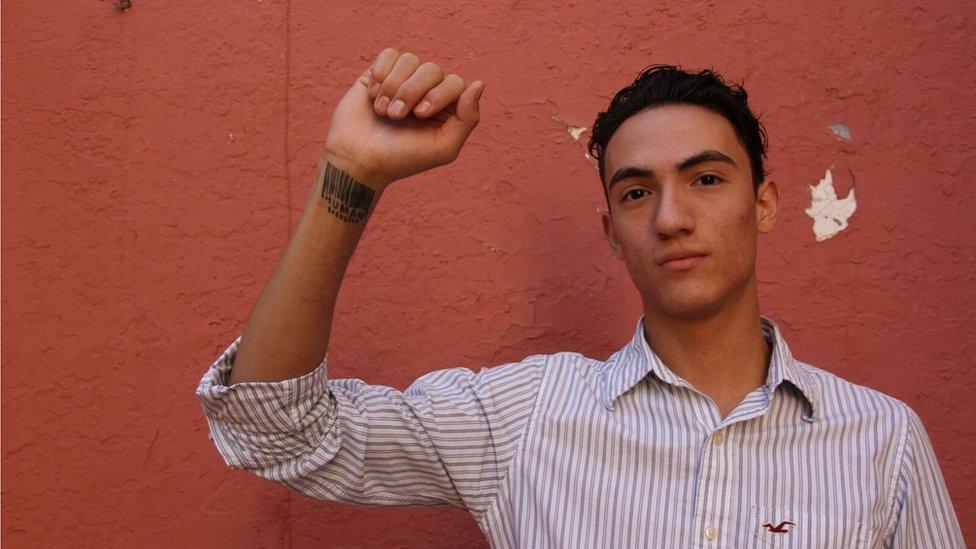
Luis was 16 when he tried to kill himself. He now wants to go back to his studies
Ciudad Juarez, the border city in northern Mexico which between 2008 and 2011 had the dubious reputation of being the murder capital of the world, has seen its homicide rate fall since 2012. But as Irene Caselli reports, the city's high levels of violence have had long-term psychological effects on its residents, especially its youth.
Luis Mercado was 16 when he had his first panic attack. It was during a school break.
He just felt the urge to run away and hide. It was at this point that he went to the school bathroom and started cutting himself.
Self-harming became a habit he felt he could control... until he had another panic attack.
"It was like a balloon. You can fill it with water but it has a limit. When it fills up too much, it bursts," he says of his feelings at the time.
"Once it has exploded into pieces, it is not a balloon anymore," Luis says speaking slowly, sitting on a sofa in his home.
"I feel that this is what happened to me. So many years went by with me filling up the balloon that it eventually burst."
Violence at home
Luis' family was not directly affected by the drug-related violence, which accounted for many of the 10,000 murders committed in Ciudad Juarez between 2008 and 2011.
And yet from his earliest years he has been a witness to violence.
Luis' father was killed when Luis was just one year old. It was Luis' mother who murdered him.
She was convicted and jailed. After her release, she died in what the coroner said were suspicious circumstances. Luis was 11 at the time.
One night five years on, Luis tried to kill himself.
But in the end he did not go through with it. He says he does not know what stopped him.
"Sometimes I ask myself why I did not keep going if I felt so scared. I wonder why I did not do it," he recalls.
'Life has little value'
Luis is part of a growing number of people in Ciudad Juarez who attempt to take their own lives.
One out of four residents has thought about taking his or her own life, and one out of ten has tried to do so, a study carried out by the Family Centre for Integration and Growth (CFIC) with the support of the Autonomous University of Ciudad Juarez (UACJ) suggests.
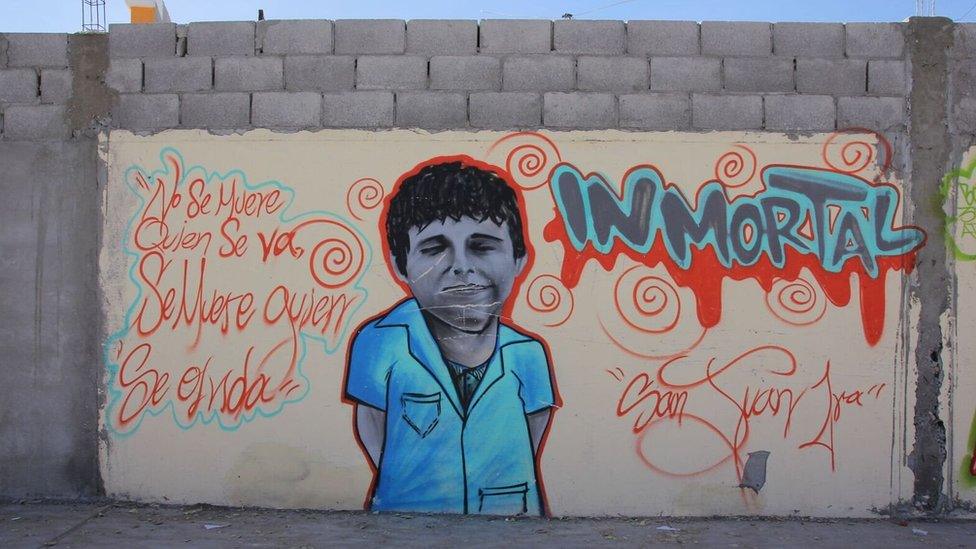
Suicide among young people is on the rise in Mexico and there are murals in Ciudad Juarez remembering those who died by suicide
Young people between the age of 15 and 29 make up the biggest number of those who die by suicide, figures from Mexico's National Institute of Statistics and Geography suggest, external.
Experts say that while each case is different, the violence prevalent in Ciudad Juarez is a significant contributing factor.
Prof Oscar Armando Esparza Del Villar is in charge of a psychology doctoral programme analysing problems related to violence.
"There is a sense that life does not have the same value as before," he says.
"When you live within this culture where life is not valued as before, suicide can seem like one of the options for those who have symptoms of depression or problems in their lives," he explains.
'Dying inside'
Luis says in his case it was a gradual process. "It's like when you turn off the lights in a house. You start from the upstairs, then the downstairs, then the outside lights," he recalls.
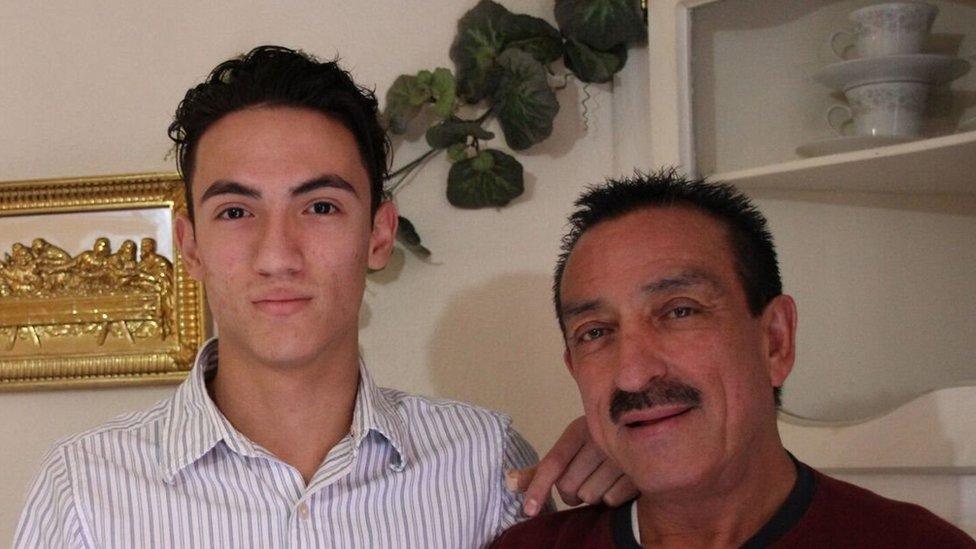
Luis' great-uncle Ruben saw the warning signs and took him to a centre where Luis got help
"Internally I felt as if something was shutting down inside me. Like when they say that you are dying inside."
He says he also showed noticeable external symptoms such as "the way I dressed, the cuts on my arms, my sad expression".
His teachers detected the symptoms and alerted Luis's great-uncle and guardian, Ruben.
Ruben took Luis to CFIC, one of the leading centres providing support to people with suicidal thoughts and their families. The centre was able to help Luis, who now works as a waiter and who hopes to go back to studying.
Its director, Silvia Aguirre, says it is as if violence has permeated the entire city.
"Violence has two ways of manifesting itself. The highest degree of external violence is homicide, the highest degree of internal violence is suicide," she says.
Hidden pain
And she argues that Mexicans have not yet learned how to process the pain that comes with both.
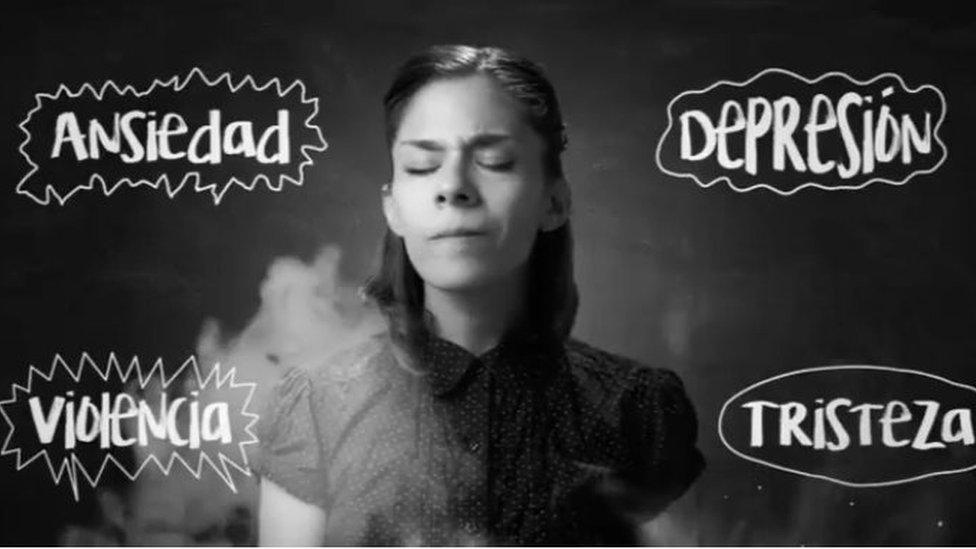
The CFIC helped produce a suicide-prevention video aimed at educating people about the danger signs
She says that Mexican culture and its celebration of death during the traditional Day of the Dead in November sometimes give outsiders the wrong idea.
"We show the world that death to us is a matter of Catrinas [the name given to the figure of the female skeleton often seen at Day of the Dead celebrations], meeting with the family and eating food to celebrate our dead."
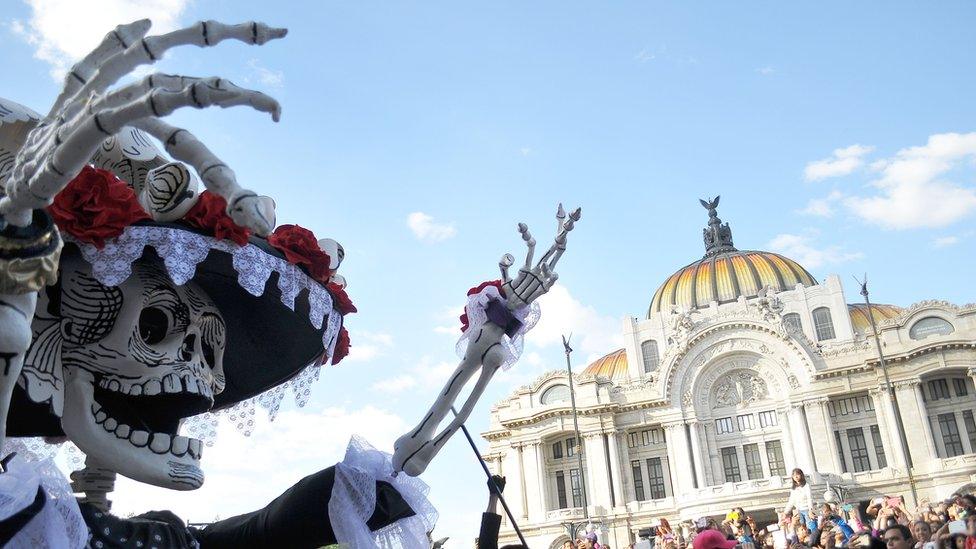
Catrinas are popular figures at Day of the Dead celebrations, but Silvia Aguirre thinks despite this joyous portrayal of skeletons, Mexicans are failing to face pain
"That is part of our culture. But there is another hidden part, where we swallow our pain.
"Mexico is asleep. It prefers sleeping than facing pain," she adds.
The CFIC has tried to make people more aware of the warning signs. It was the driving force behind a public campaign to prevent suicides and a new telephone hotline which was started last year.
The centre also runs workshops for bereaved families which have not yet mourned properly.
Miguel Angel Esparza and his wife Patricia attended such a workshop.

The couple says they have learned valuable lessons about how to deal with the pain of losing their son
Their son, Eduardo, was 21 when he killed himself. He left no note and they say they have no idea why he did it.
Eduardo was a month away from completing his nursing degree. During the graduation ceremony, his classmates put an image of Eduardo on a chair for the official photo.
His parents well up when they proudly show his degree.

Patricia proudly shows off her late son's nursing diploma
"At the workshop they taught us that he was going to be with us forever. They teach us how to see him in a flower, in a garden, in a butterfly, in anything that inspires us," Patricia says.
"It has helped me a lot. I remember him with pain, but nicely."
Irene Caselli was in Ciudad Juarez as a 2016 Adelante Latin America Reporting Fellow with the International Women's Media Foundation.
- Published19 December 2016

- Published31 August 2012
